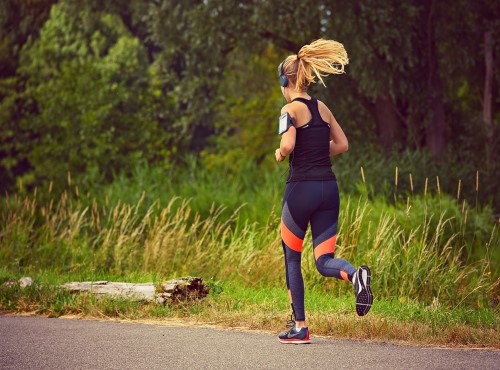
Whether you’re new to the exercise world or are a seasoned athlete, no doubt you want to know which types of workouts will keep your heart at its healthiest. Your concern is warranted: Heart disease remains one of the top killers of Americans, male and female alike.
Do you have to live on a treadmill to obtain peak cardiovascular benefits from exercise? What about time spent in the weight room or the yoga mat — does that also help your heart? Researchers continue to seek answers. However, one thing scientists know beyond the shadow of a doubt is regular exercise decreases your risk of developing heart woes and other health problems down the road.
How Much Cardiovascular Exercise Do You Need?
Experts recommend adults get 150 minutes of moderate-level exercise per week. They also advise getting a balance of cardiovascular, strength and flexibility training.
Are you feeling daunted yet? Don’t worry. Even if you’re entirely sedentary, 10-15 minutes per day of regular exercise makes for a good start. In fact, starting small and building from your progress is the hallmark of any sensible training regimen. Trying to do too much too soon results in the type of injuries weekend warrior types often experience, like joint pain. Think of your fitness as a marathon, not a sprint — you need to save enough energy to go the extra mile again tomorrow.
It’s best to spread your exercise out over the course of a week versus trying to take a two-hour cardio jam on a Saturday morning followed by lifting dumbbells in the weight room. Aim for 30 minutes of exercise at least five days per week. This gets you to the minimum without putting you at risk of overuse injuries.
Types of Cardiovascular Exercise
Now that you know how much exercise you need, what types of activities can get you moving? Do you need to jog on a treadmill or dress up in Jane Fonda-esque leotards and dance around an aerobics studio?
You certainly can if you like, but those hardly represent the most convenient way to squeeze fitness into your day. If you’re new to exercise or have a hectic schedule, nothing beats going for a walk for a quick cardiovascular boost. Walking helps fitness newbies by taking it easy on joints like knees and hips, which can ache from high-impact activities such as jogging.
Speaking of joints, if you have rheumatoid arthritis or another degenerative condition, swimming makes for excellent cardiovascular exercise. The buoyancy of the water supports the majority of your body weight, making movement easier. You even can use aqua weights to get a strength-training workout along with your cardio.
Finally, if classes are your jam, mix it up a bit. Try a fun, dance-inspired Zumba workout one day and a high-intensity interval training (HIIT) class the next. If you have special needs, classes such as Silver Sneakers offer milder exercise using equipment like chairs for additional balance and stability.
What Level of Intensity Is Best?
Walk into any fitness facility, and you’ll see a chart on the wall advising you of your fat-burning zone. For years, exercise physiologists recommended working at 60 percent of your maximum heart rate. If you measure exertion subjectively, this is slightly more than half as hard as you potentially could work — which doesn’t feel hard at all. At this intensity level, you won’t feel breathless, which is something many exercisers appreciate.
This method of measuring exertion does require a bit of math. To find your maximum heart rate, start with 220 and subtract your age. Then, to determine how hard you’re working, you take the percentage — like 60% — and simply calculate the way you would a sale.
However, is working at a pace where you still can engage in conversation easily the best way to increase cardiovascular fitness? Experts disagree. Recently, routines such as HIIT have taken the physiology world by storm. Does working at higher intensities provide greater benefits?
In an independent study, researchers compared those who participated in moderate-intensity training (MIT) and those who did HIIT. They discovered the MIT group improved their VO2 peak more than the HIIT group. Your VO2 peak refers to the maximum amount of oxygen your body consumes during exercise. However, both groups experienced a decrease in body fat percentage, bad cholesterol levels and triglyceride levels. They also saw improvement in their VO2 peak, the moderate group slightly more.
If both moderate and intense exercise provide significant benefits, is there any reason to work out harder? Yes. When you participate in high-intensity training, you get more bang for your workout buck, figuratively speaking. You burn more calories in a shorter amount of time.
With today’s busy schedules and the gig economy leading many to work more than one job, many people place a premium on squeezing as much workout as possible into 15-20 minutes. On days when meetings run over and time gets away from you, working out a higher intensity for a shorter time makes sense if you still want to max your calorie burn for weight-loss purposes.
However, if you have the time, there’s no need to feel the heavy burn either to lose weight or reap the cardiovascular benefits. Like the old tale of the tortoise and the hare, slow — well, moderate — and steady wins the race.
What About Resistance Training and Stretching?
This isn’t to say you’re getting total fitness if you only jog, walk or swim. Three components exist for complete fitness: cardio, strength and flexibility.
For strength training, exercise professionals suggest lifting moderately at least twice weekly. You need not hit the weight room — resistance bands and hand weights cost little, and you can perform squats, overhead presses, curls and extensions during TV commercial breaks.
For flexibility, you could take an hour-long yoga class. However, it’s not necessary to do that much. You can fit stretching in two- to four-minute increments during commercial breaks, or spend five to 10 minutes upon waking and before going to bed doing gentle mobility exercises. You also can alternate and save longer flexibility workouts for rest days — just be sure to warm up and cool down briefly when doing any other type of exercise.
Achieving Peak Cardiovascular Health Through Exercise
Cardiovascular fitness is an important component of overall health and can ward off diseases such as heart disease and Type II diabetes. Whether you go hard and go home or work out moderately for a longer period, you’re benefiting your waistline and your health. What are you waiting for? Get started on your exercise program today!





